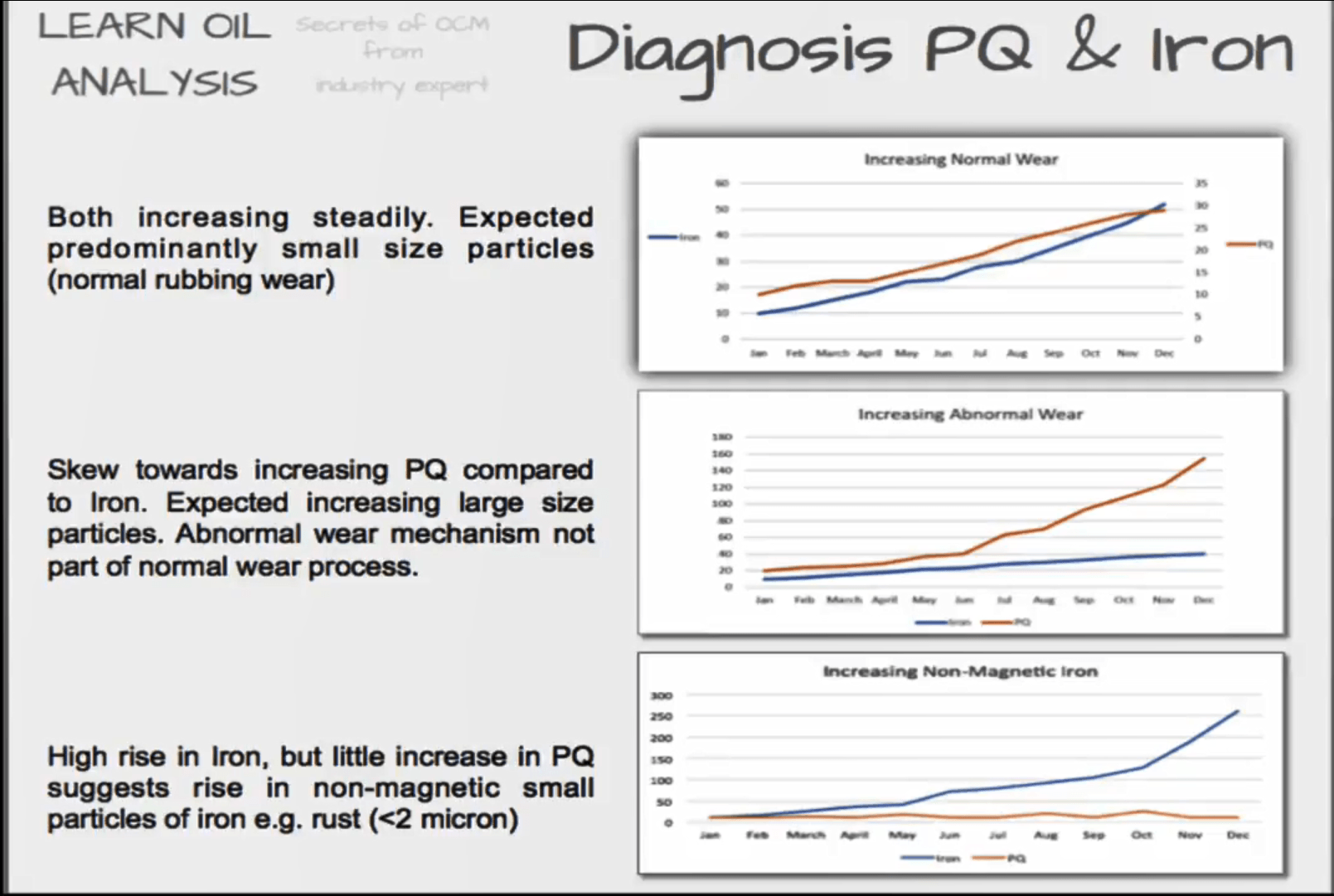
A great limitation is this only applies to magnetic materials so other wear elements cannot be tested to the same degree. So this usually means just iron and equally, iron that is in a magnetic form because rust for instance is not magnetic. However new advances in technology such as the LubeWear method make this a thing of the past and the benefits of small and large particle testing can be detected with the LubeWear method
Ferrous debris – is a similar test to PQ but instead of it being unitless the test calibrated against known concentrations of magentic iron giving a true reading in ppm of ferrous material but it too has the same limitations of only detecting magnetic particles.
| Common Causes | Potential Result | Potential advice | ||||||||||||||||||
| High PQ result compared to Iron ICP result | Abnormal wear processes: |
|
|
Further investigation of oil/filter by laser net fines or ferrography to determine cause | ||||||||||||||||
Find out how wear metals, ferrous debris, contamination elements, wear particle quantification index (PQ / PQI) and additive metals are tested below, what each element on a report means and how to diagnose which components on failing in the video below.


